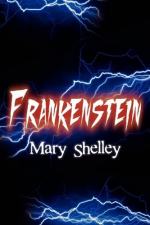|
This section contains 1,516 words (approx. 6 pages at 300 words per page) |

|
Romanticism & Technology in Frankenstein
Summary: Explores the Mary Shelley novel, Frankenstein. Analyzes the fusion of romanticism and technology in the story. Argues that through the character of Victor, the possible outcomes of the fusion of both theories are elucidated.
Romanticism as defined in the American Heritage dictionary is a movement "characterized by a heightened sense in nature, emphasis on the individual's expression of emotion and imagination, and rebellion against established social rules and conventions." Technology is defined as "the practical application of knowledge especially in a." Mary Shelley joins these two realms in Frankenstein, to create one of the most memorable characters in literature, Victor Frankenstein.
Historically situated, Frankenstein falls into the age of Romanticism. The age has been dated from the late eighteenth to mid-nineteenth centuries. Frankenstein was written in 1816 and published in 1818. In her novel, Shelley conforms to many of the aspects of the Romantic novel. Some of the most noticeable trends were setting, focus on emotional behavior (internal and external), the deviation from common or ordinary characters and the acceptance of intuitive and emotional characteristics in place of intellectual and rational characteristics.
Shelley places...
|
This section contains 1,516 words (approx. 6 pages at 300 words per page) |

|


